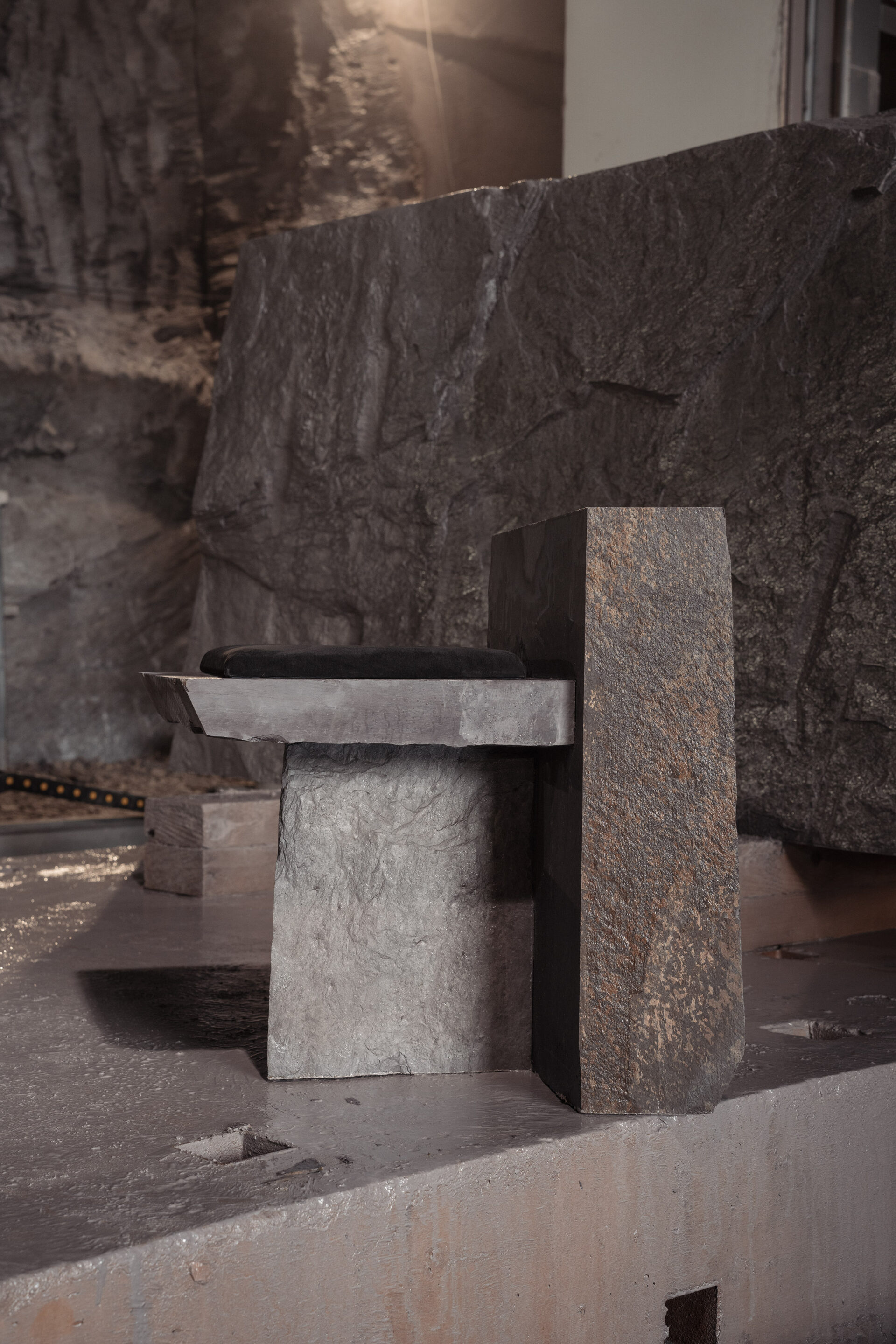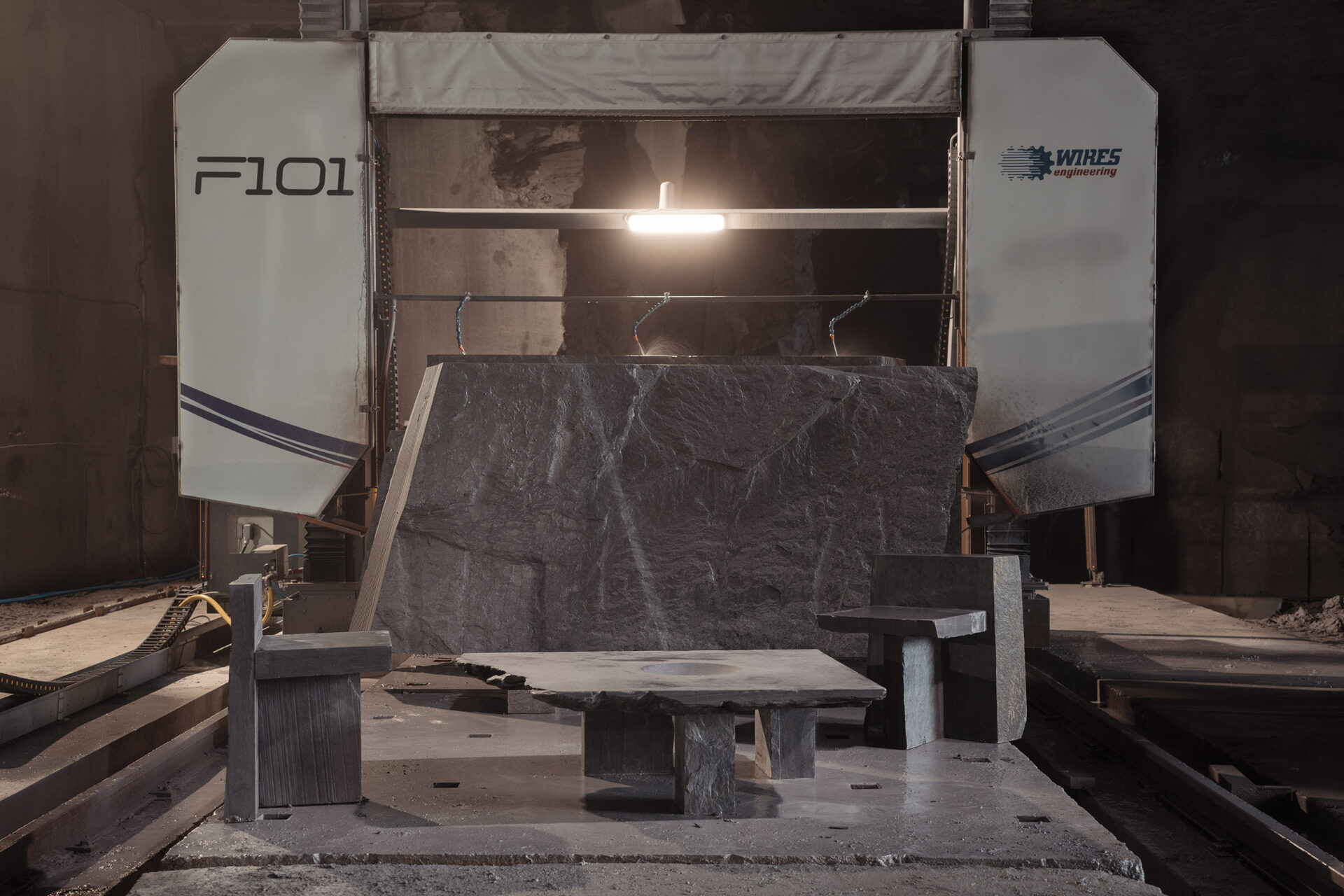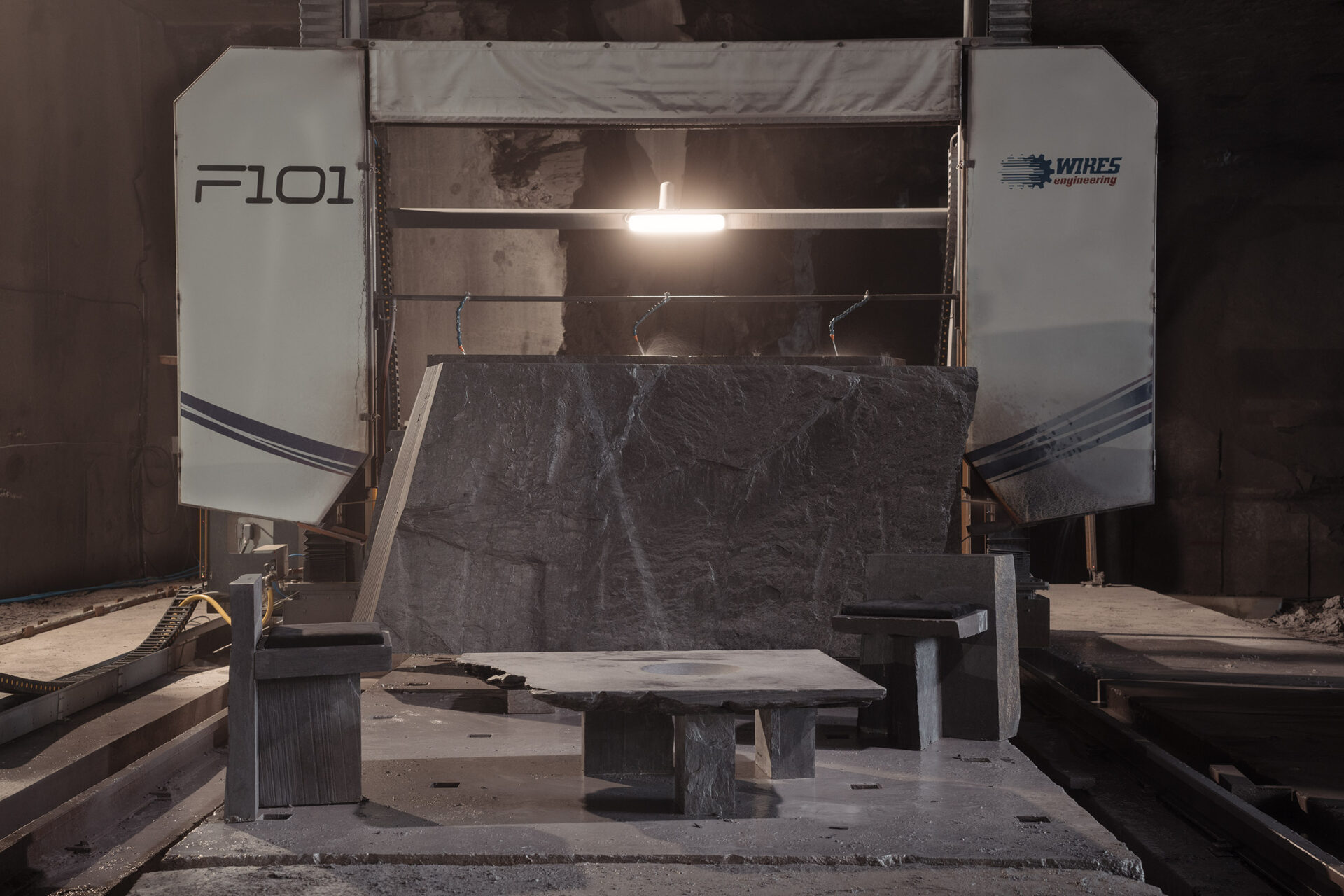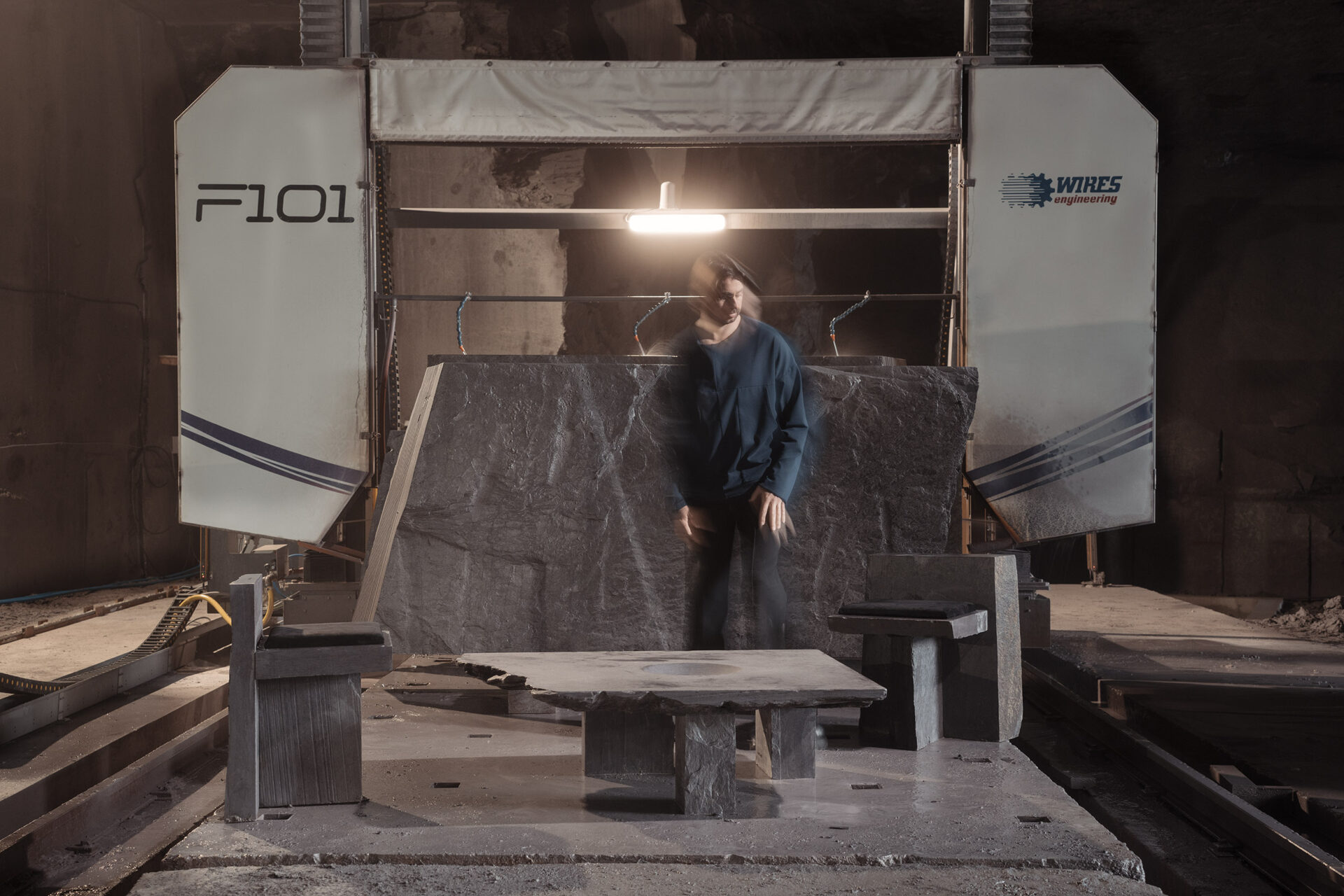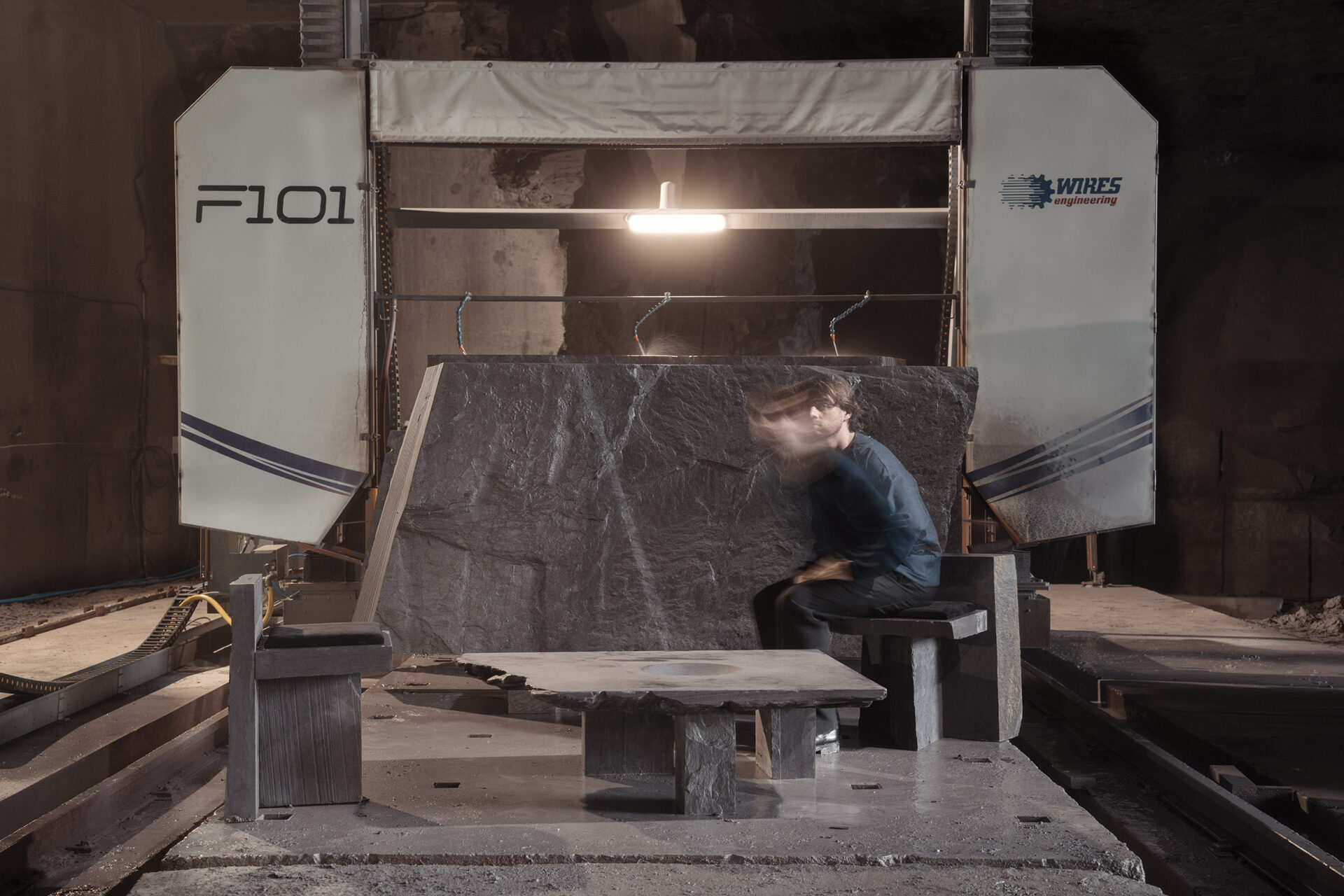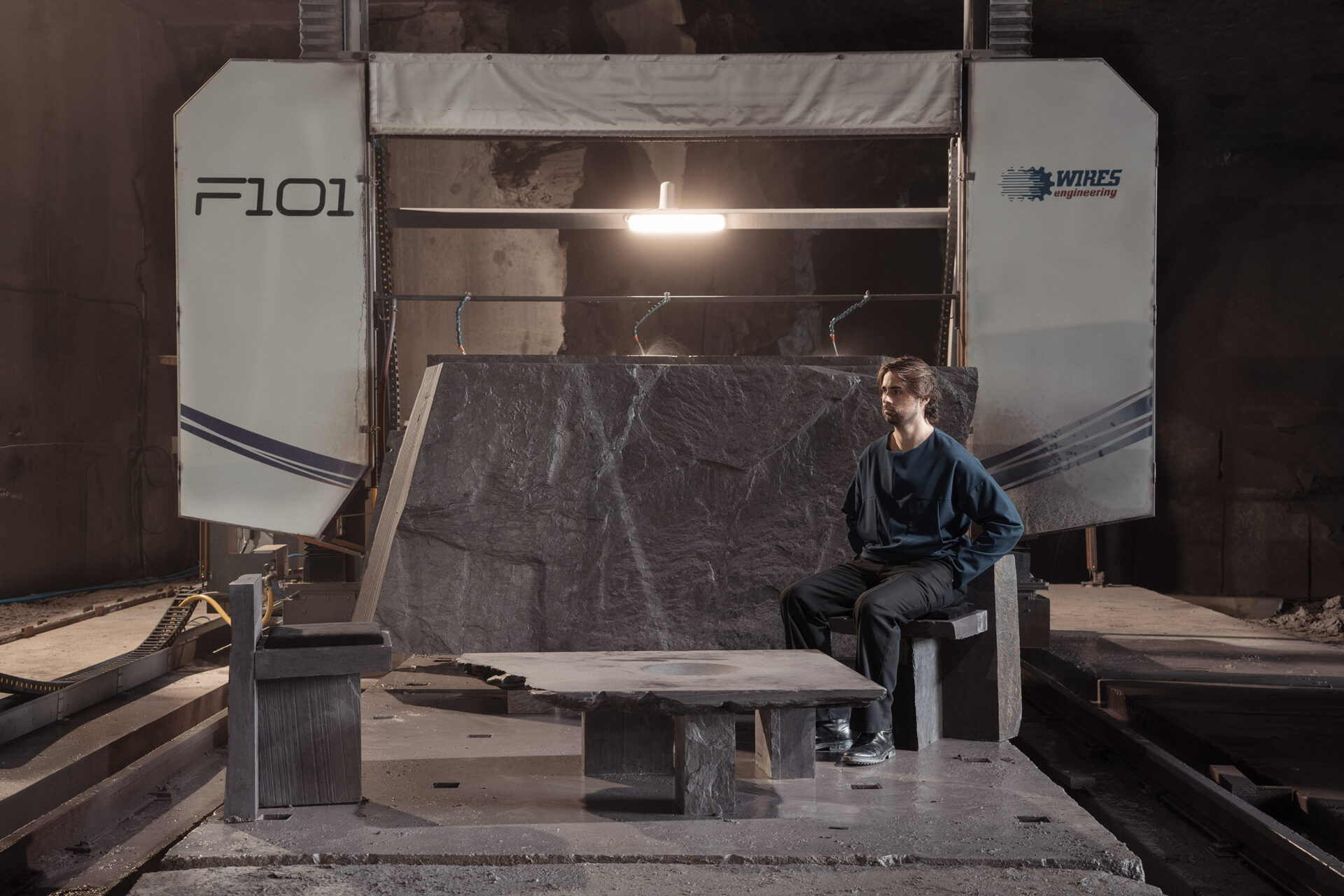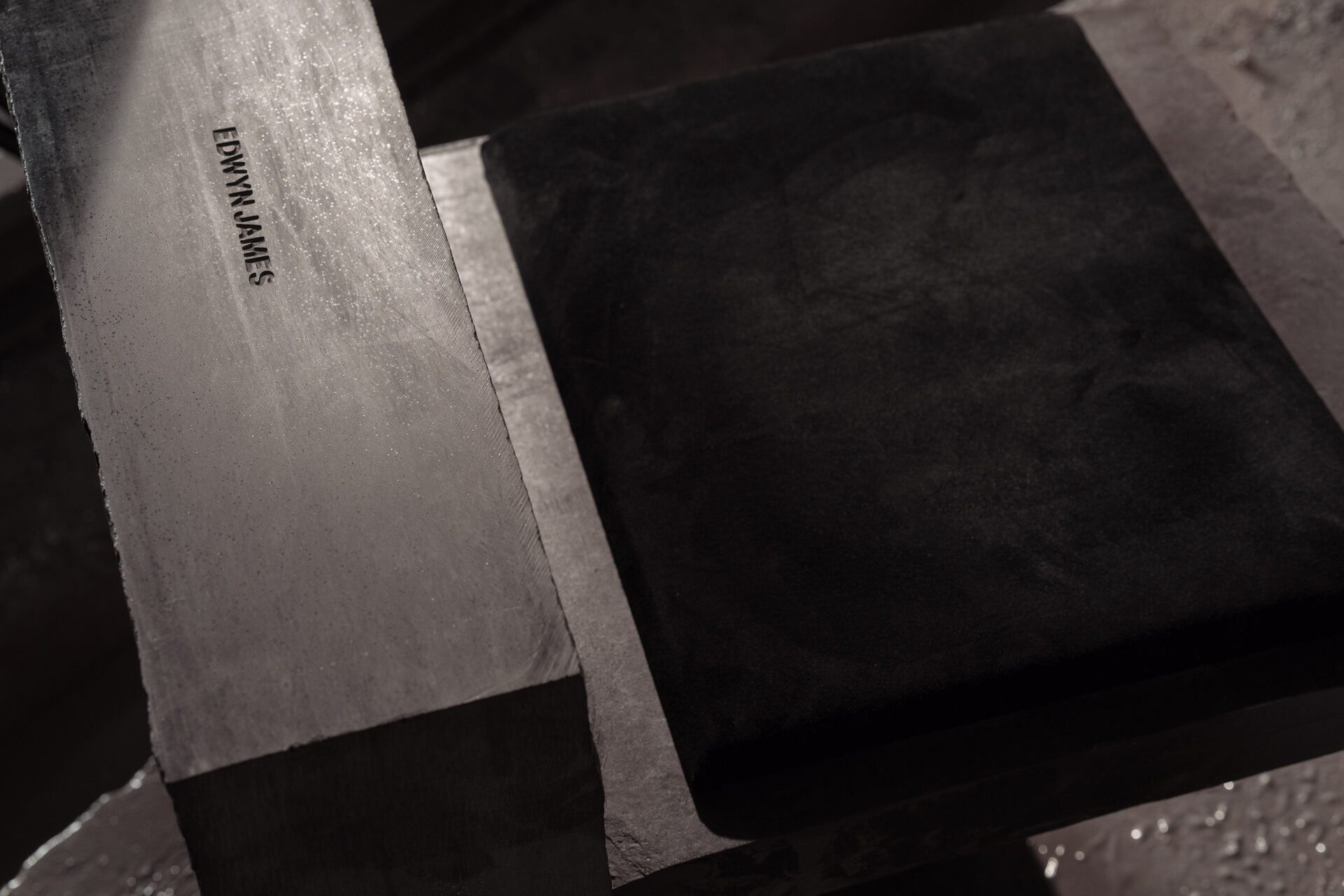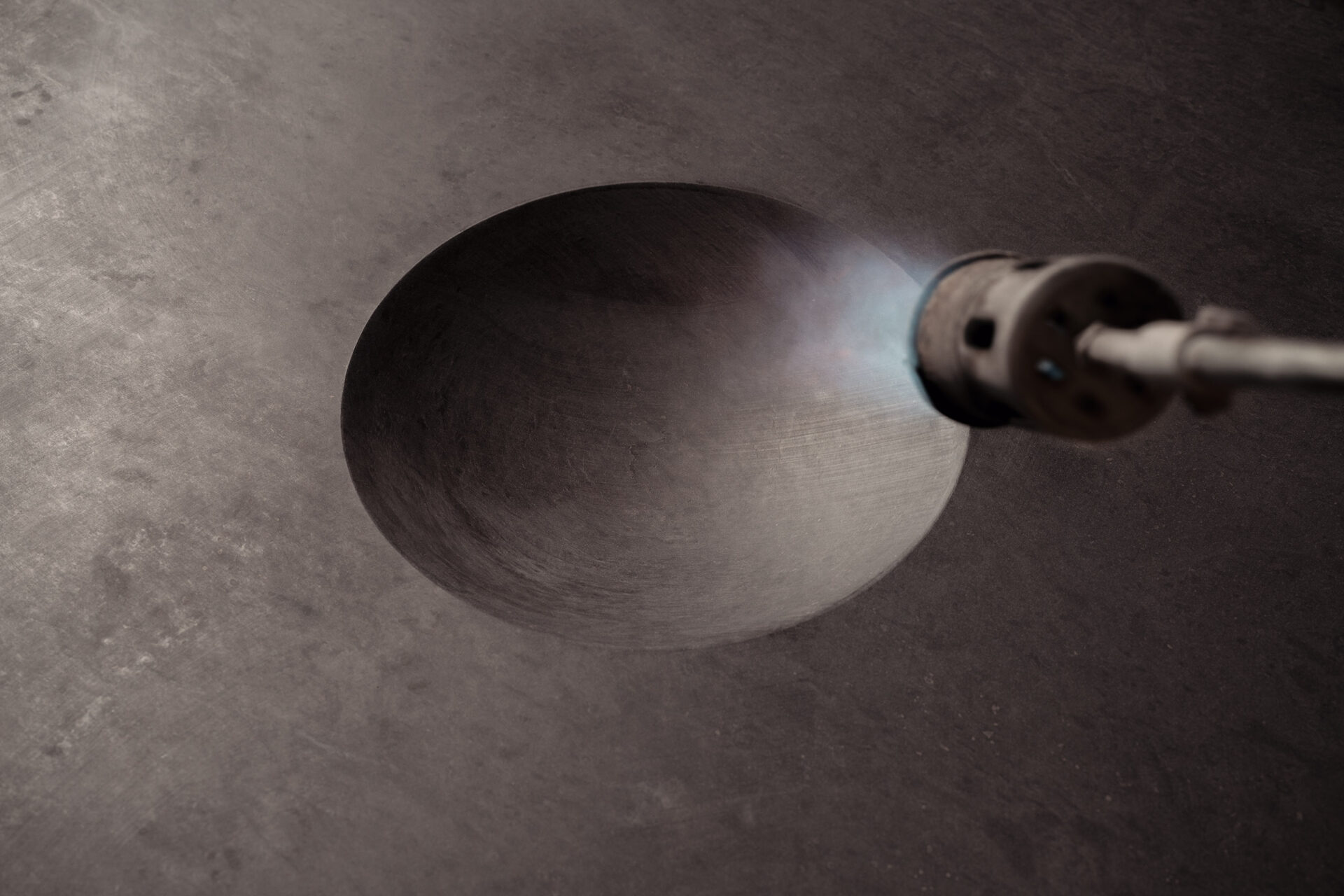
Sawnbacks
Sawnbacks began as a design challenge set by Aidan Forde — geologist and owner of Valentia Slate Quarry — to find a purposeful reuse for the slate waste discarded outside the quarry. The collection takes its name from the term used locally in the quarry for the large, angular offcuts left behind when oversized blocks are squared for slabbing. Known as sawnbacks, these heavy remnants are typically cast aside.
The result is a zero-waste furniture collection made entirely from these sawnbacks — reimagined as design-driven, sculptural pieces transformed without altering their origin. More than a reuse project, Sawnbacks is a response to industry by-products through the lens of form, function, and permanence. Each piece carries the physical memory of extraction, honouring the raw material and the story of where it came from.
Aidan has long been exploring ways to revalue this material — and invited me to investigate how it might be used meaningfully through design.
A record of stone in transformation — from offcuts of raw blocks in Valentia Quarry to finished works of furniture. This film captures the hands, the tools, and the process behind each bench, chair, and table.
Slate Extraction at Geokaun Mountain
Down at Valentia Slate, the stone is extracted from deep within Geokaun Mountain, on Valentia Island in County Kerry. It’s one of the last underground slate quarries in Europe. The quarry men work with enormous blocks—sometimes over 15 tonnes in weight—which are cut free from the rock face using a Fantini chainsaw with a three-metre bar. Once isolated, the blocks are tapped with a hydraulic hammer, breaking naturally along joints and cleavage lines—the natural grain of the slate.
After being hauled outside, the blocks are stored in the block yard before being brought to the wire saw underground to be sliced using diamond-embedded rings on a steel wire. The rough edges of these quarried blocks are sliced off first, as part of the normal slabbing process – in what was once known as squaring. The chimney in the quarry yard is the remnant of the engine “squaring house” that existed at the quarry in the mid-19th Century. The squaring process creates the sawnbacks—dense, raw-edged remnants that are full of texture and narrative. What was once discarded now forms the core of this project.
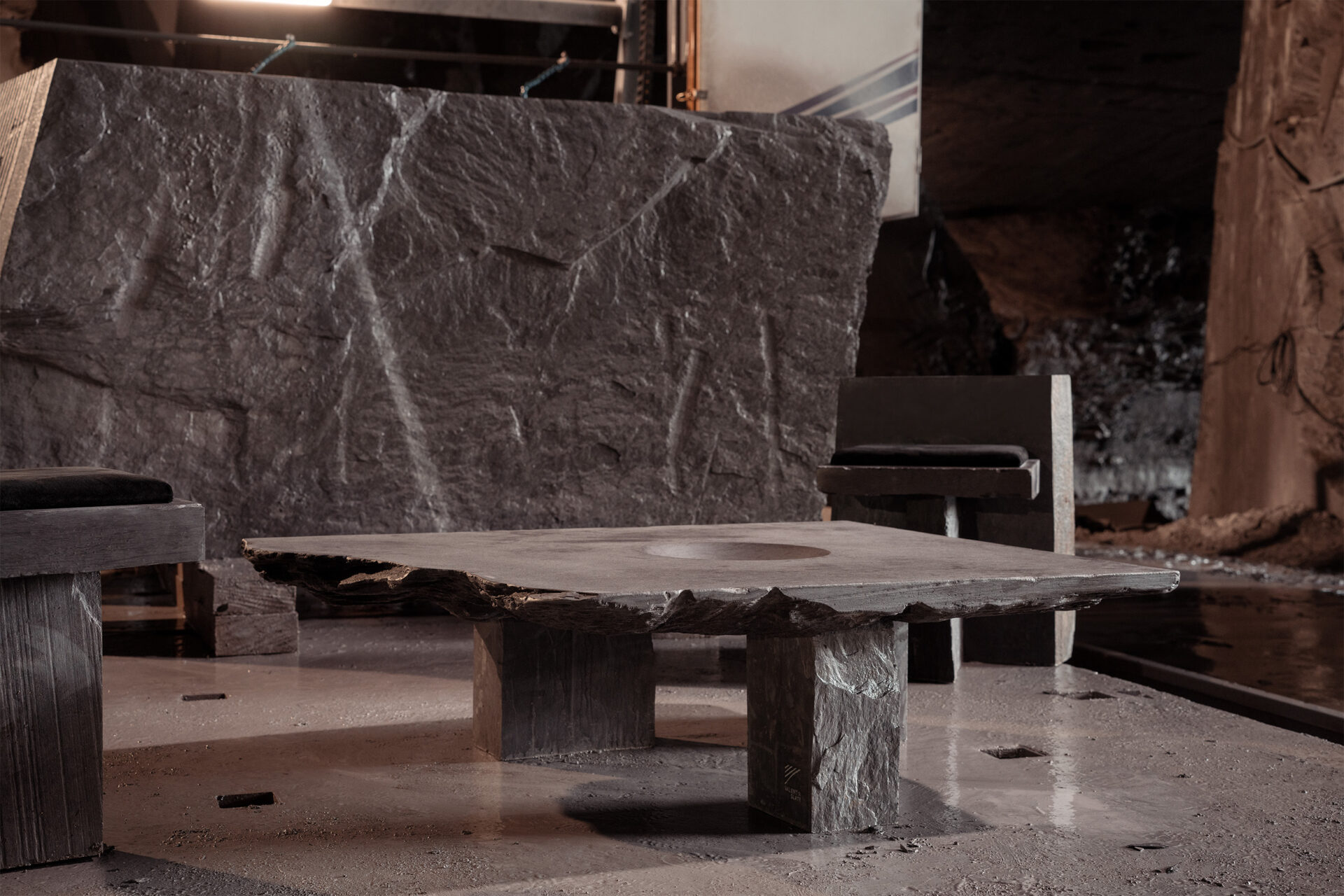
Design: Structure, Function, and Reuse
The Sawnbacks collection transforms these overlooked pieces into functional sculptural forms. It includes two large bench types: one made from split slabs of Valentia slate—cleaved to reveal dramatic, raw grain—supported by sawnbacks as leg elements. The second bench uses sawn slate with naturally smooth tops, again anchored by sawnbacks. These combinations of material create pieces that are both massive and refined, where roughness and polish, weight and precision, exist side by side.
The collection also features a coffee table and chairs, each made entirely from sawnbacks. The chairs are crafted from a single stone offcut, sectioned into six precise parts and dry-assembled—no welding, no waste. The coffee table features a sawn slate top, sanded smooth and carved with a semi-spherical bowl detail. Its legs, like the benches, are formed from raw sawnbacks—honest, textural, and enduring.
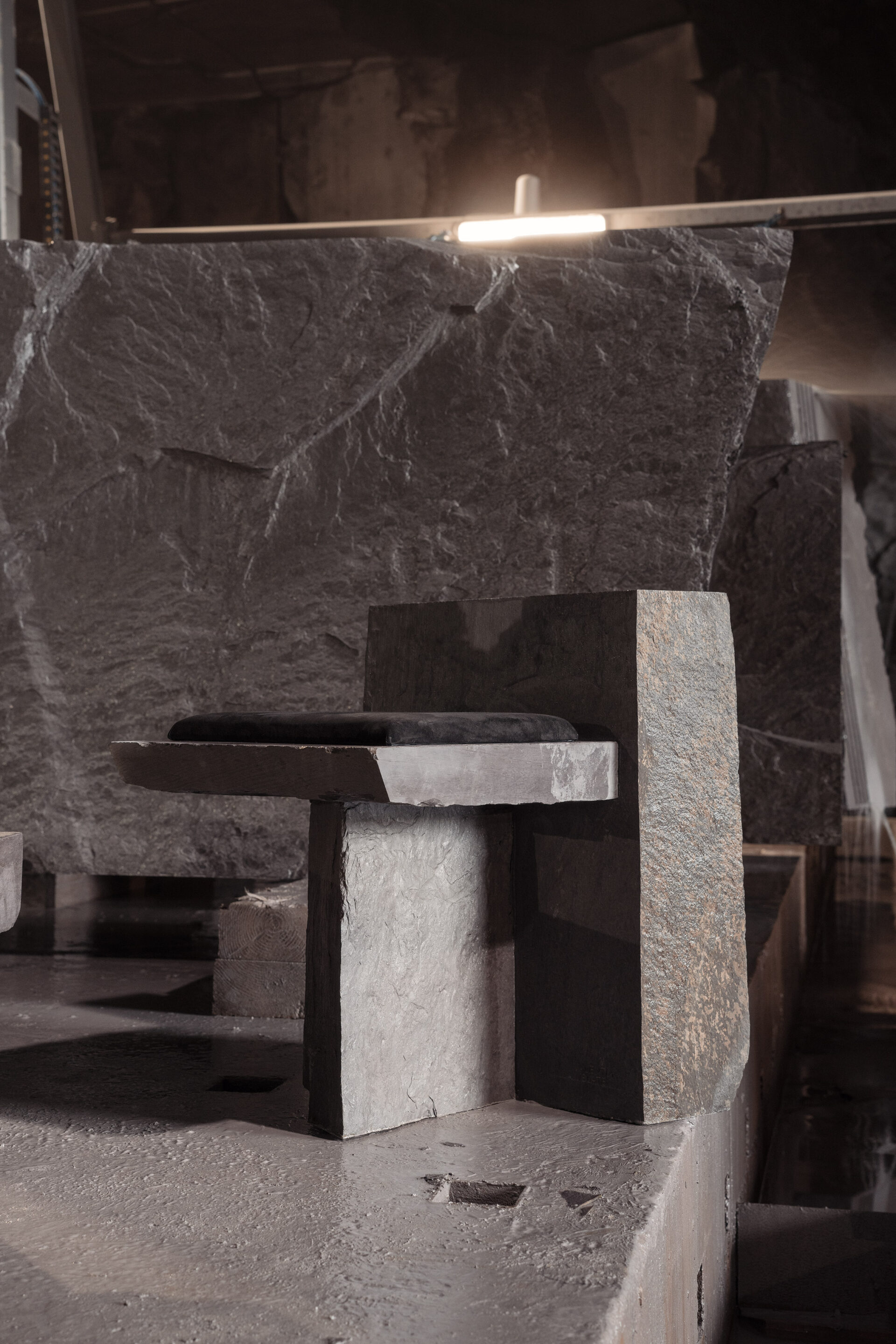
Philosophy: Respecting Stone, Legacy, and Place
Sawnbacks operates on a zero-carbon model: no new stone is quarried, and each piece moves directly from the discard pile to finished object. Energy use is minimal—limited to local transport and hand-finishing by highly skilled quarry men. Every piece is built for longevity and reversibility, using dry-fitting or mechanical joints that allow for future disassembly, repair, or reuse.
Valentia Slate is over 390 million years old—among the oldest materials still being quarried in Ireland. It has also recently been awarded IUGS Heritage Stone status, recognising its geological, cultural, and architectural significance. In that context, finding ways to honour and reuse even its offcuts feels essential. It would be a shame to discard something so rich in history, beauty, and skilled labour.
That’s why I don’t see these works as ‘waste pieces.’ The Sawnbacks collection is about more than reuse—it’s about respect. These are sculptural, enduring forms that reflect the physical story of the quarry, the skill of the quarry men, and the deep time embedded in the stone itself. They’re a grounded, permanent response to a throwaway culture—quietly radical, but utterly rooted in place.
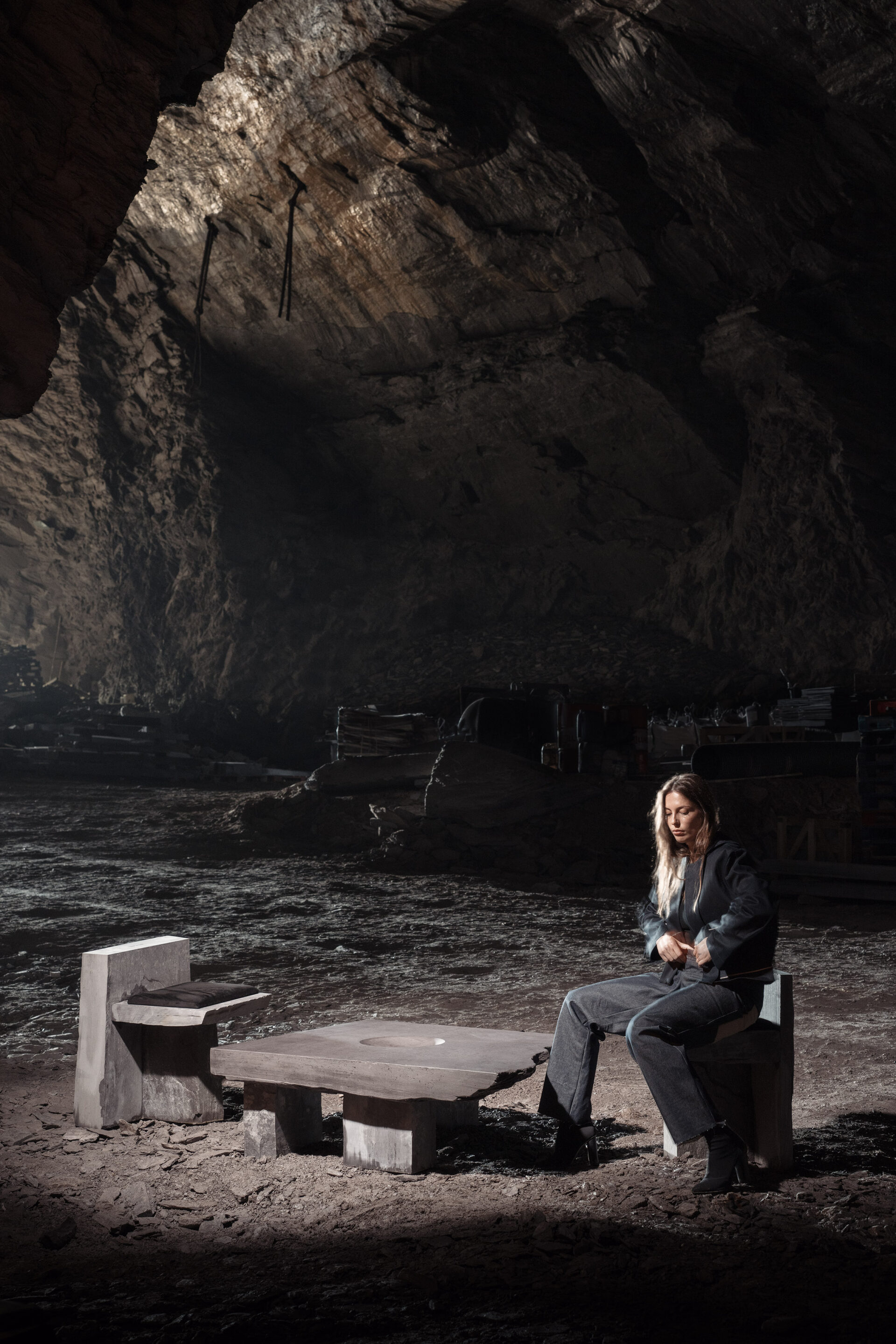
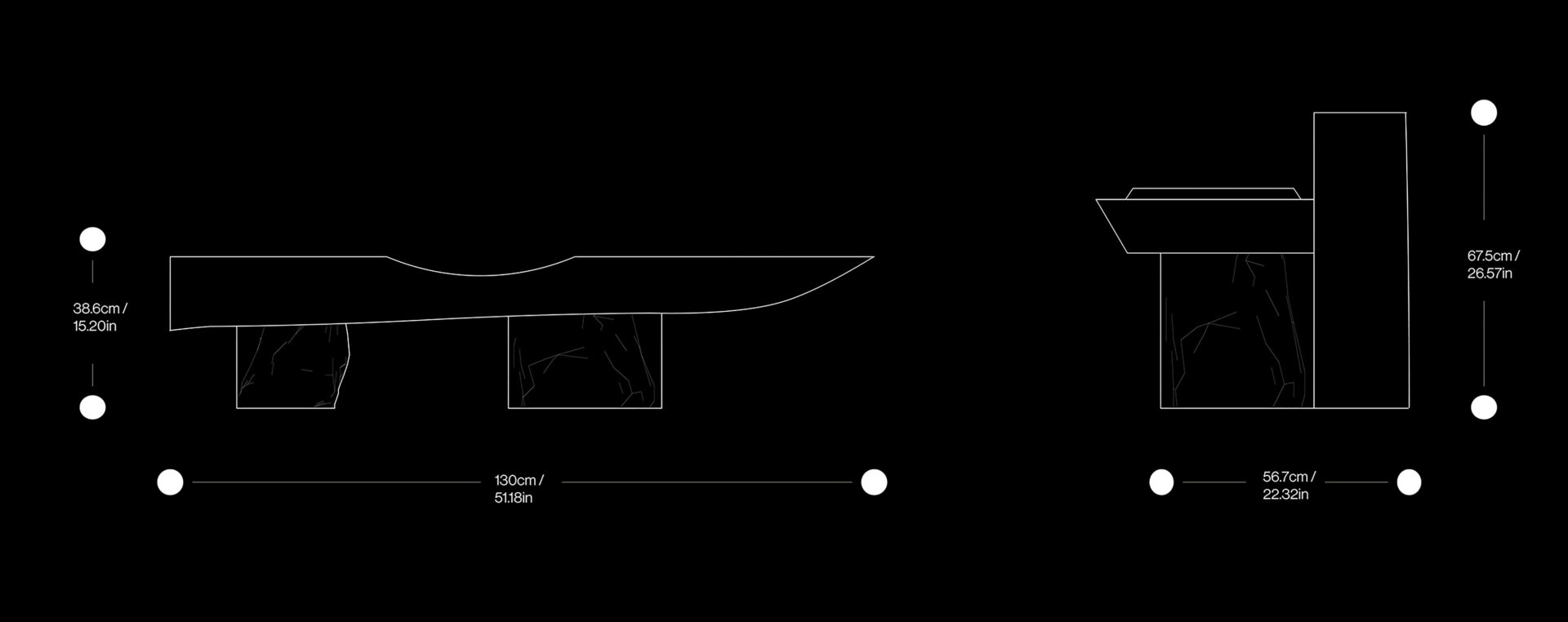
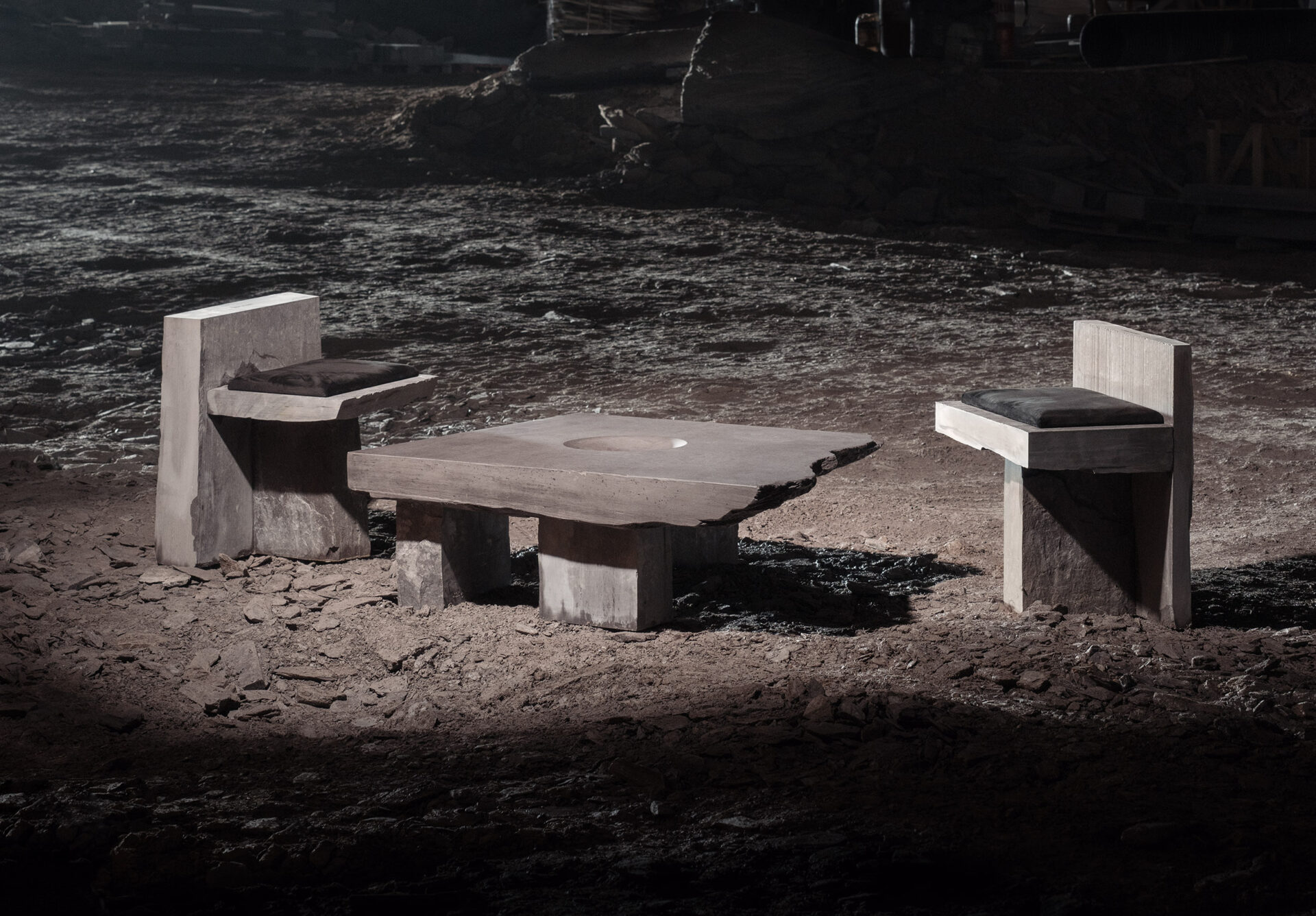
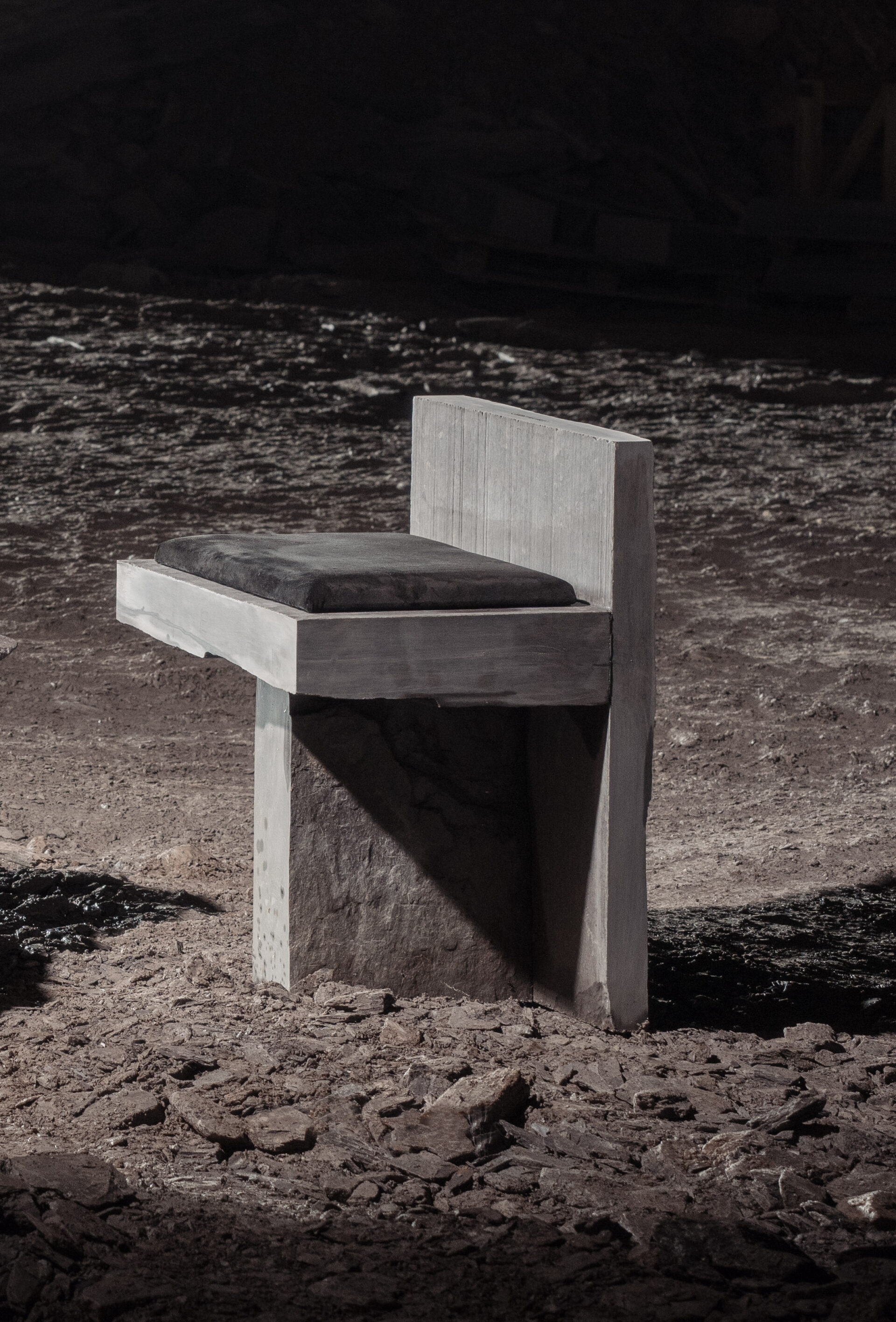

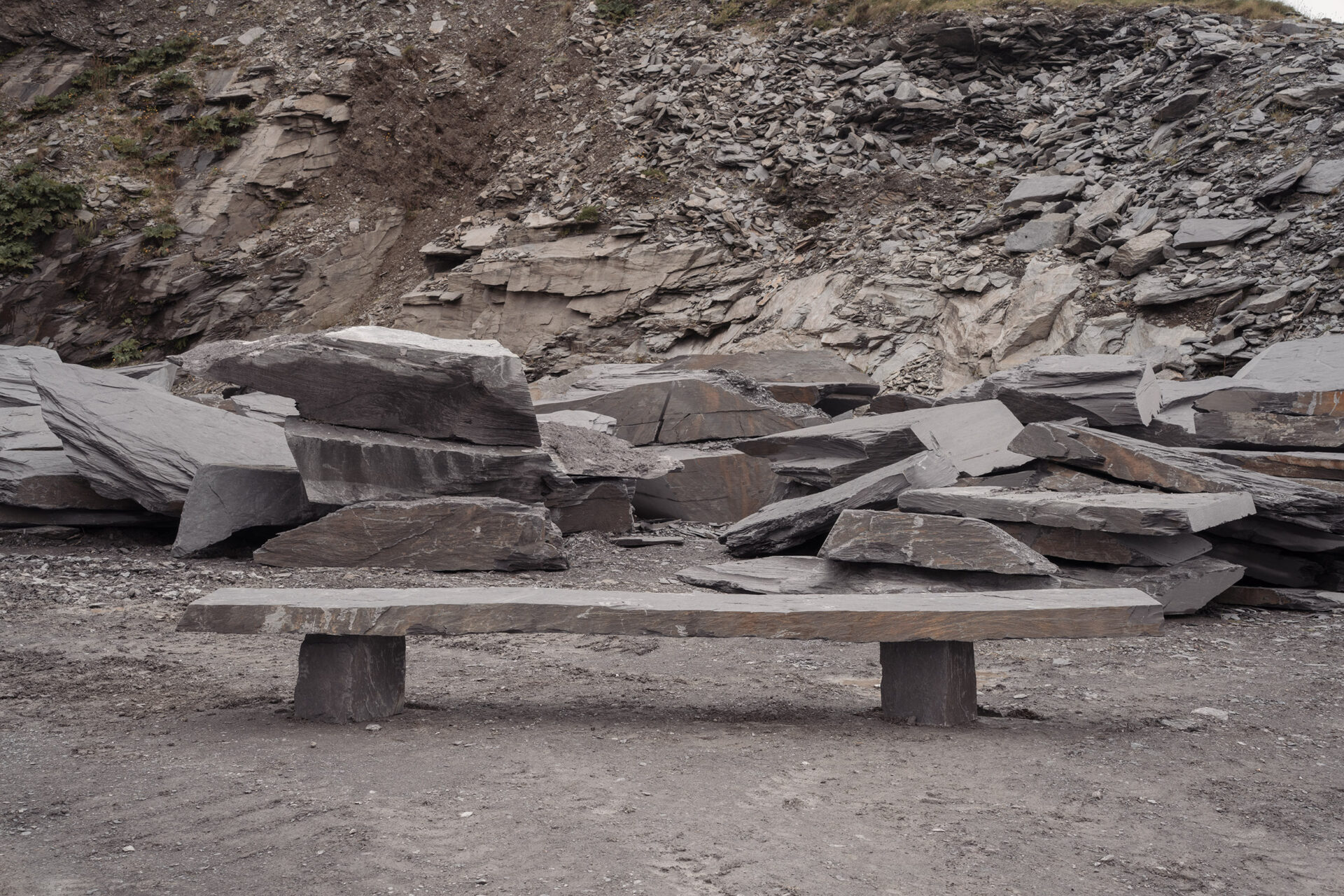
1. Split-Top Bench
A cleaved natural surface paired with raw offcut supports.
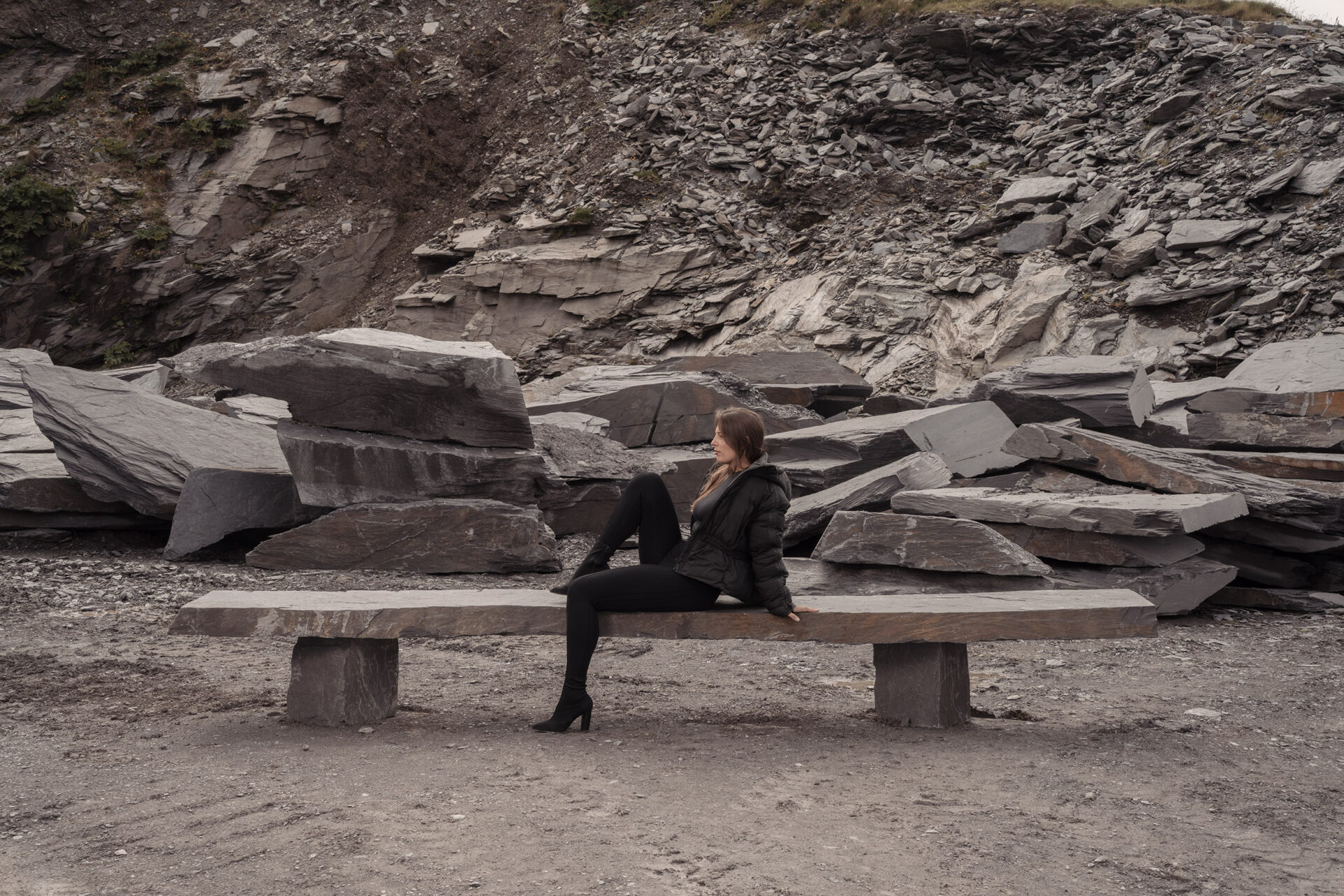
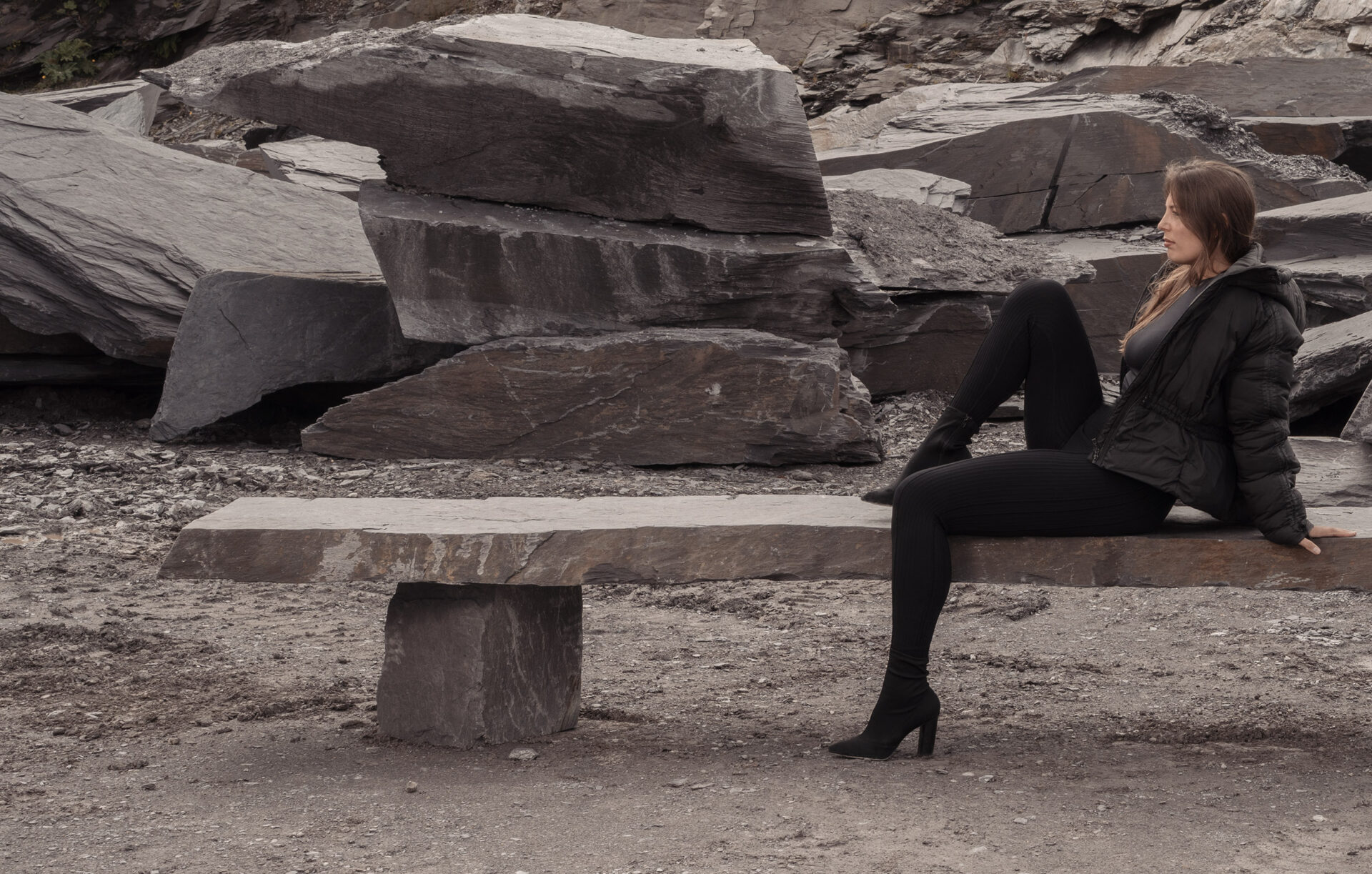
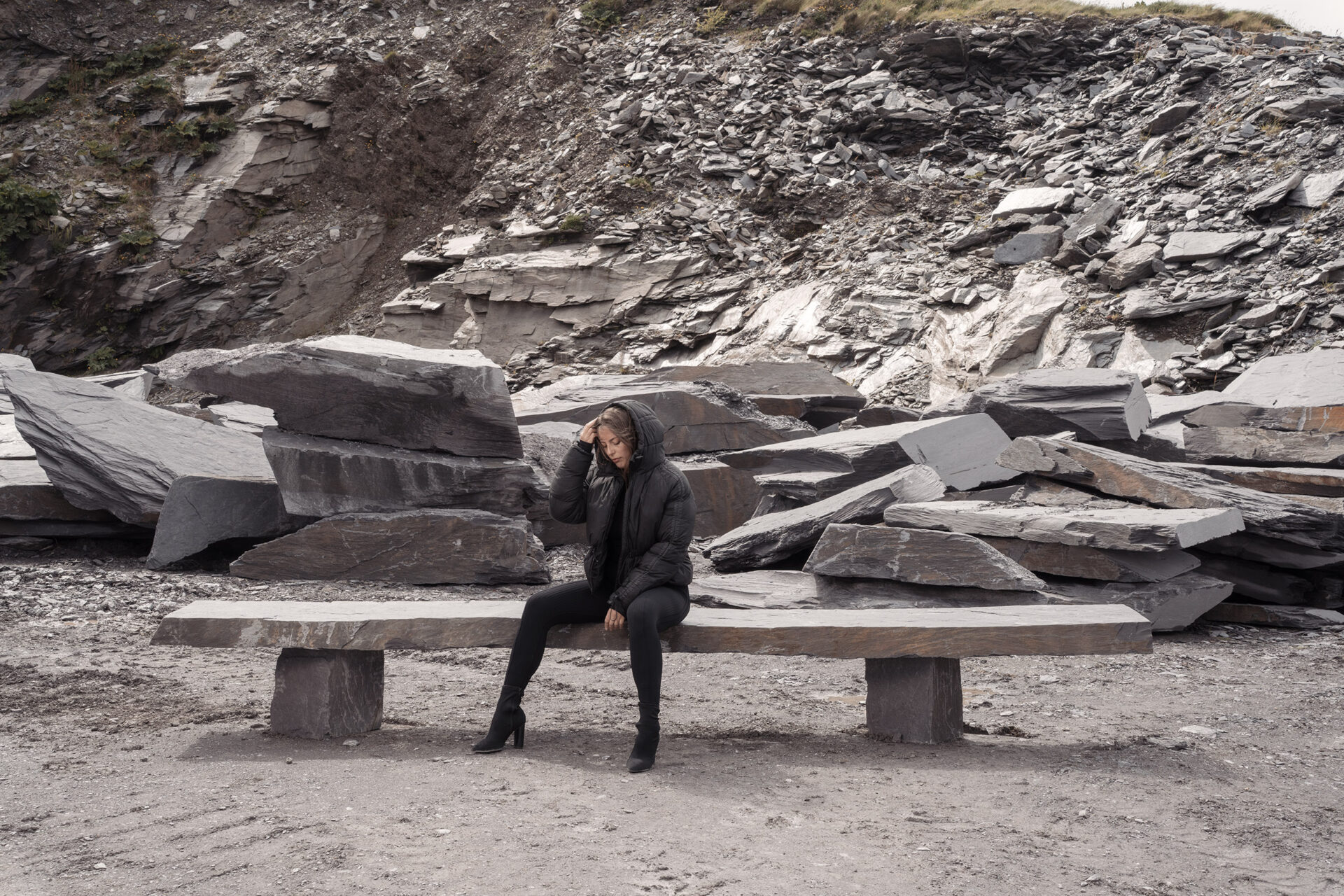

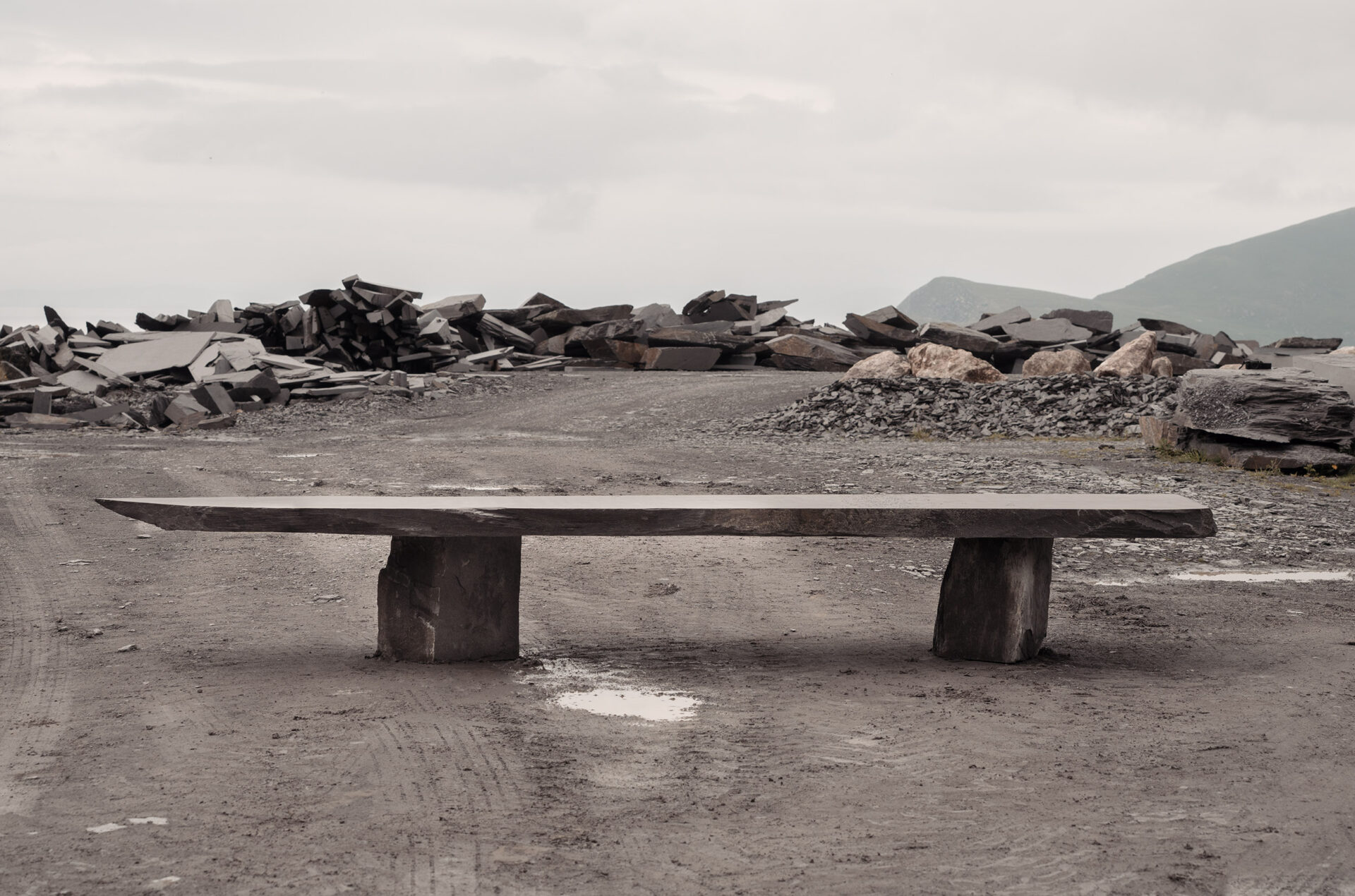
2. Sawn-Top Bench
A smooth, sanded top slab set over sawnback leg elements.
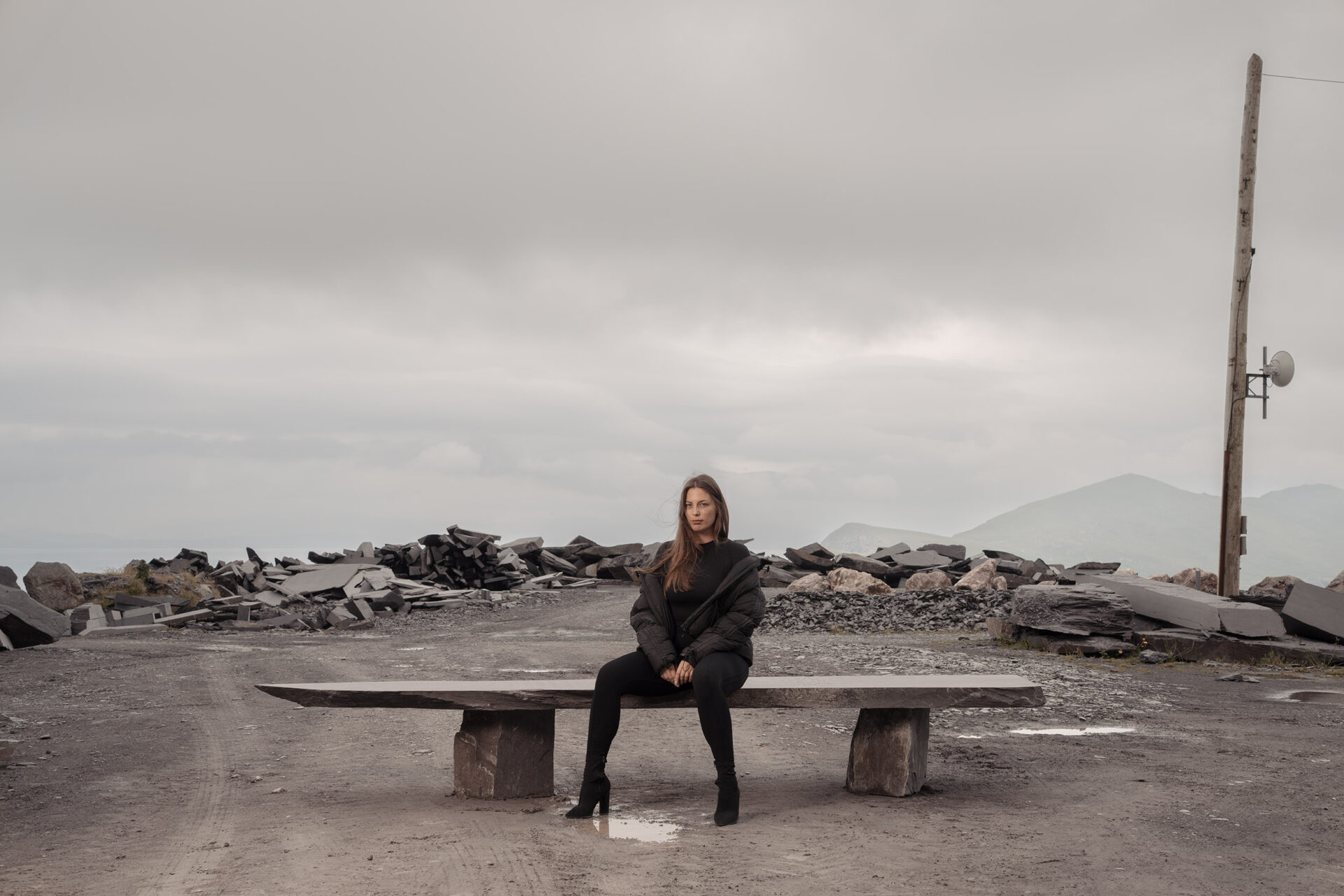
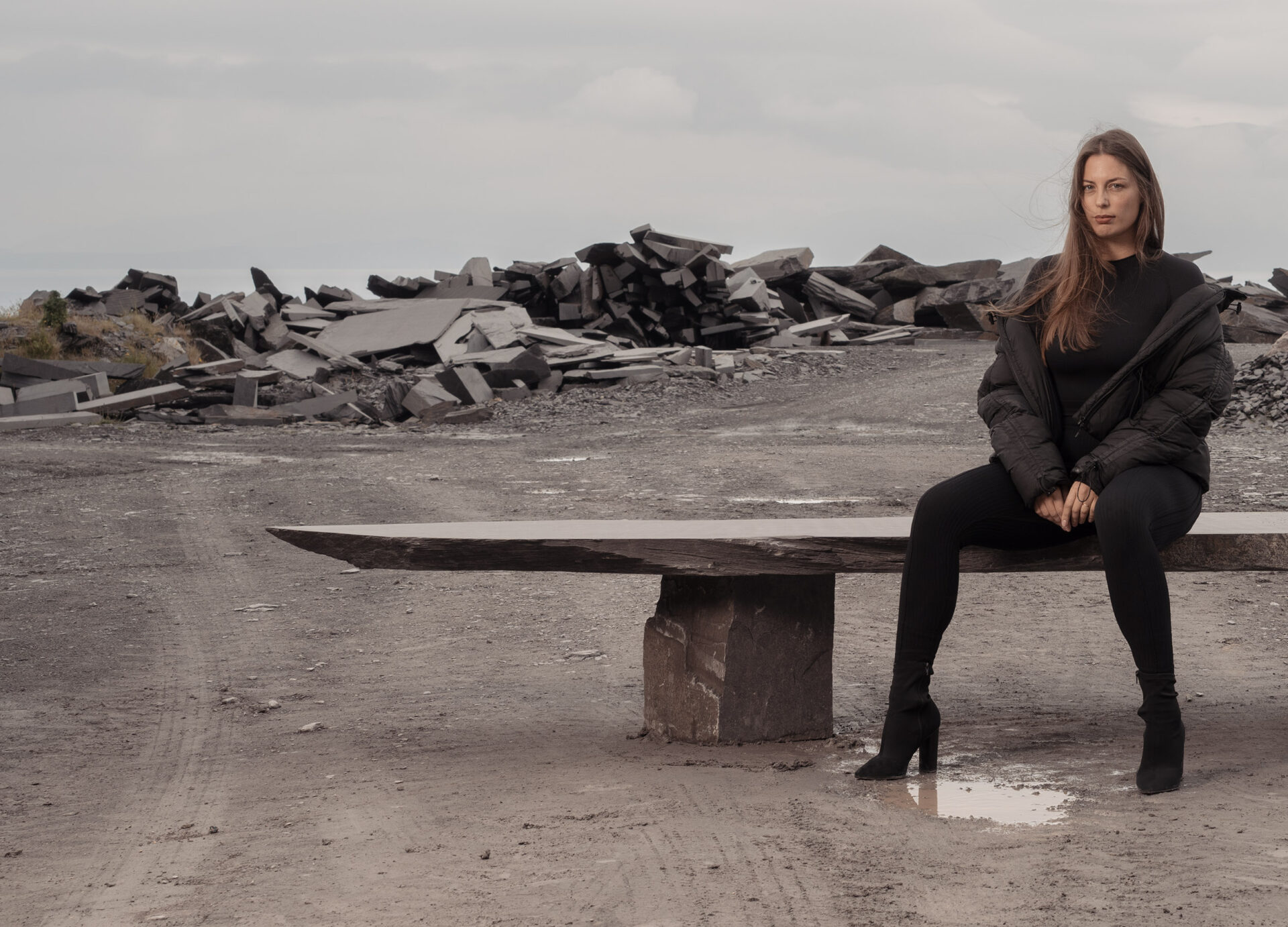
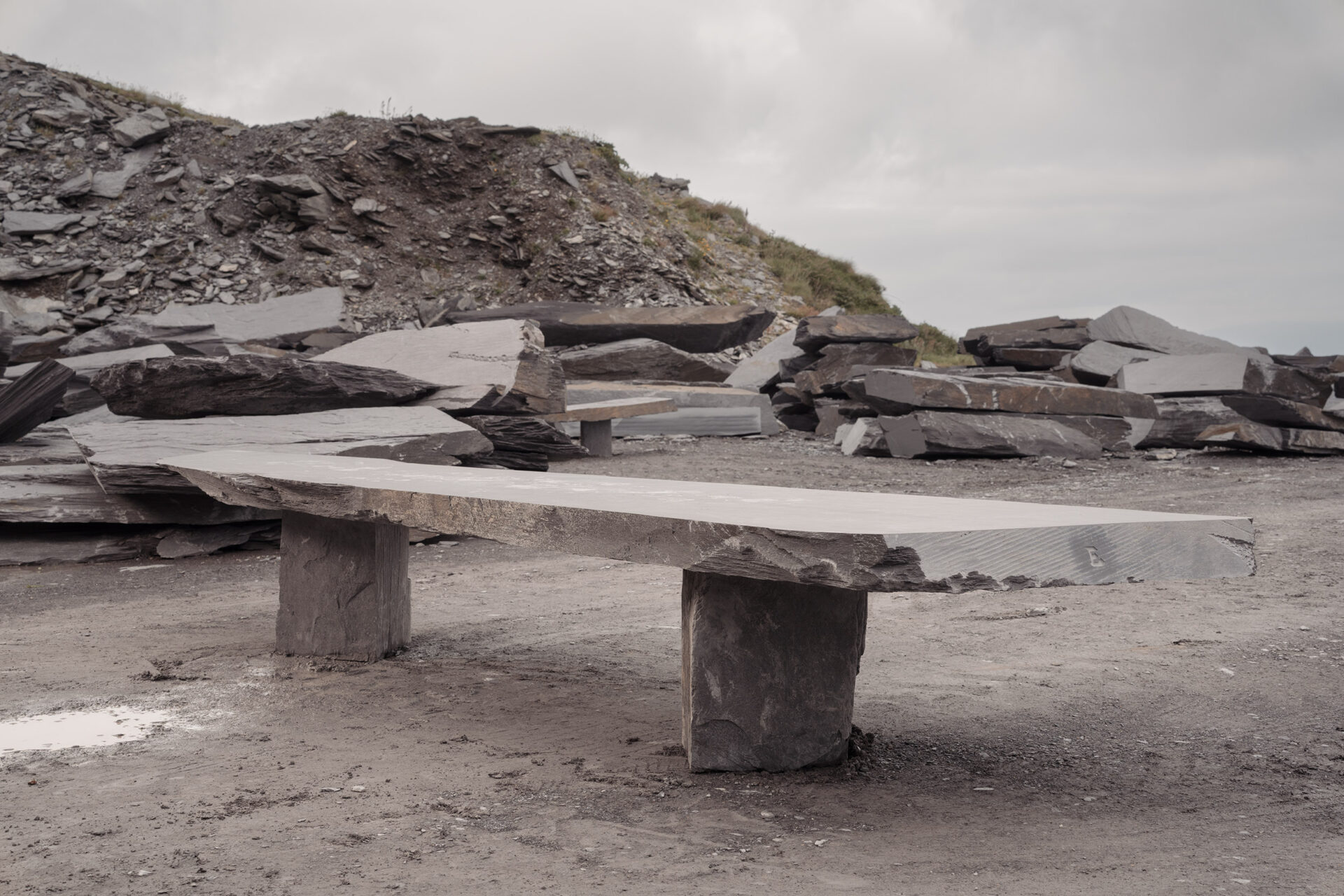
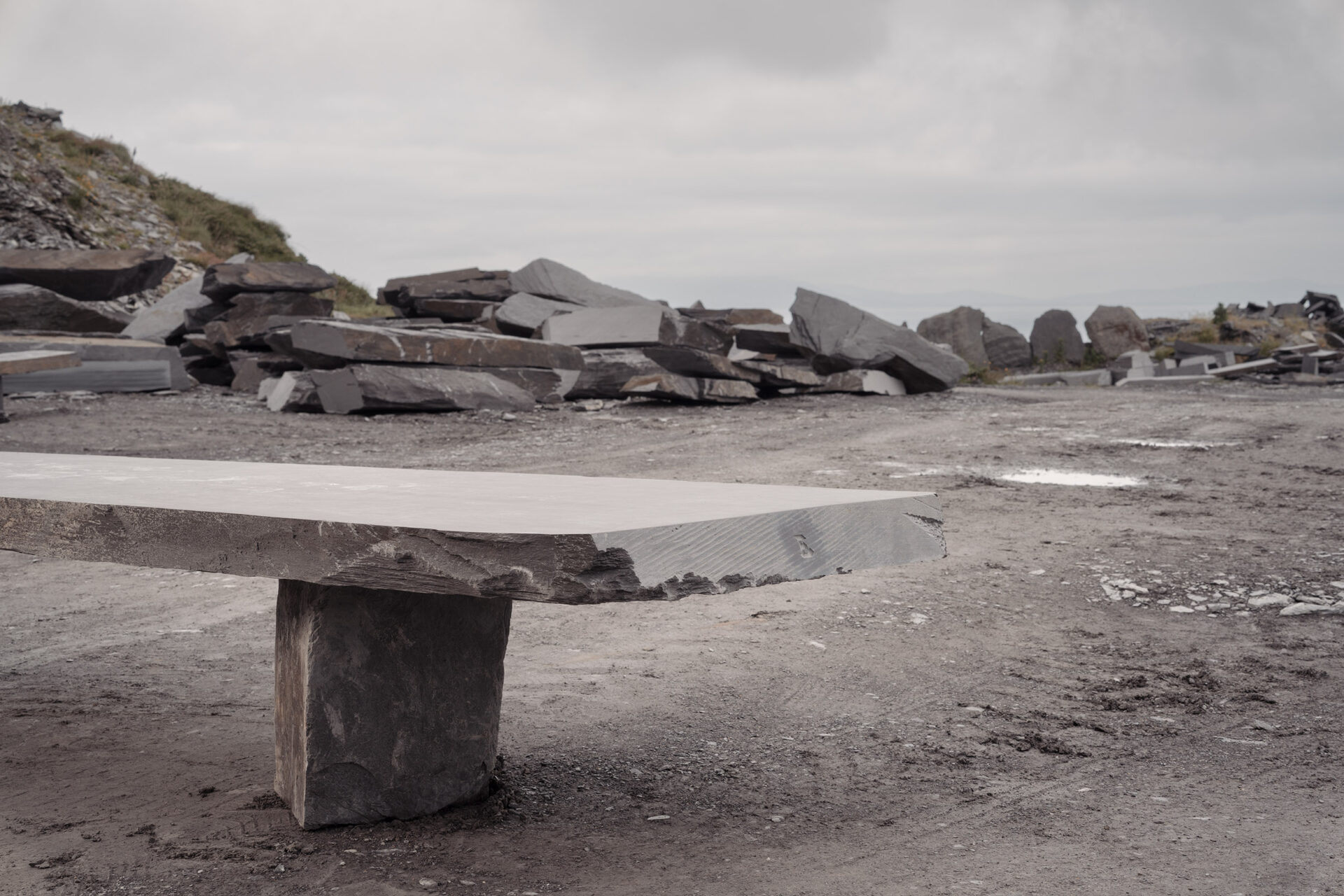
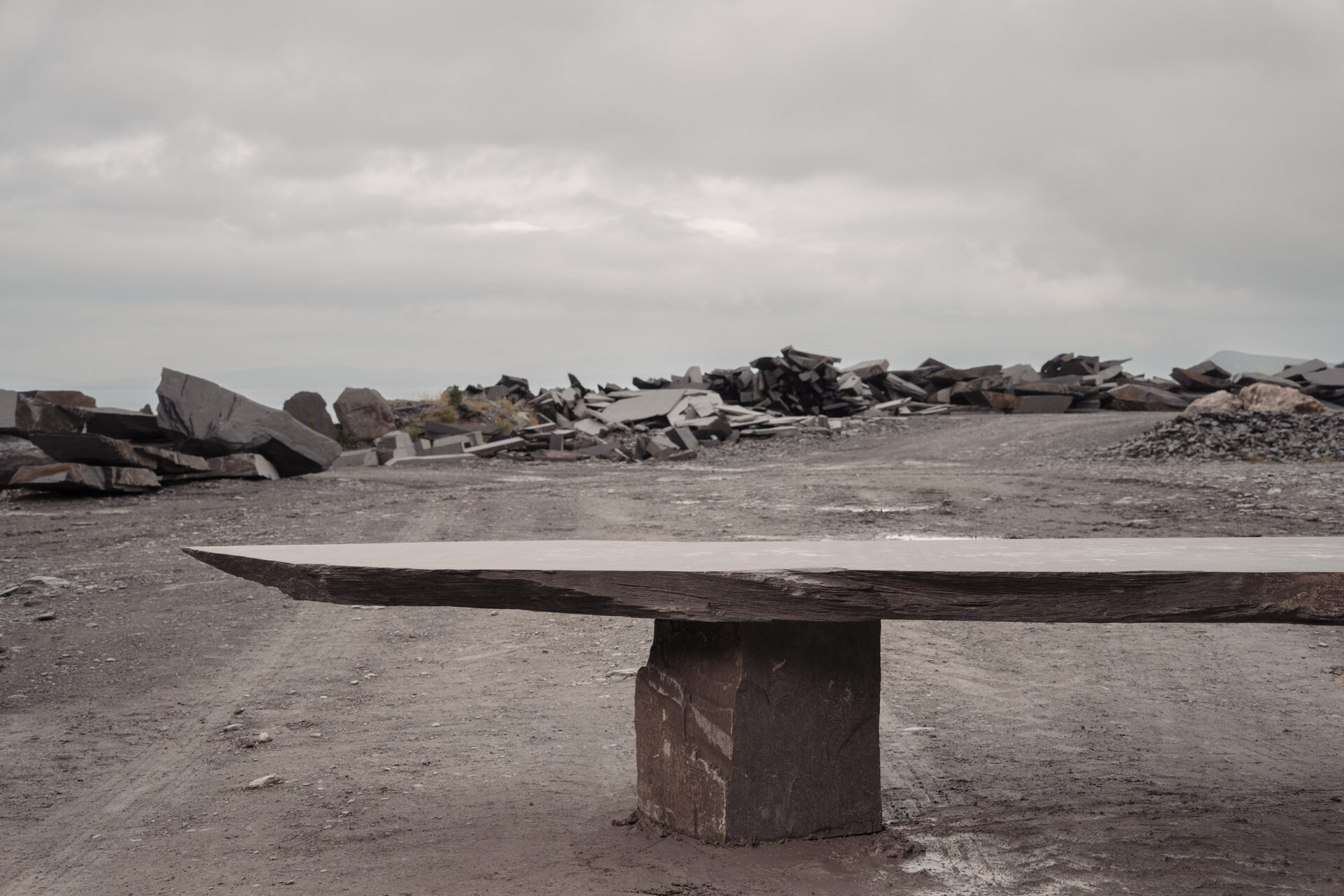
In this short video, Aidan explains how large blocks of slate are extracted from the underground quarry at Geokaun Mountain and processed on-site. Aidan describes how oversized blocks are trimmed to size, producing angular offcuts known as sawnbacks—the waste material that forms the foundation of this collection.
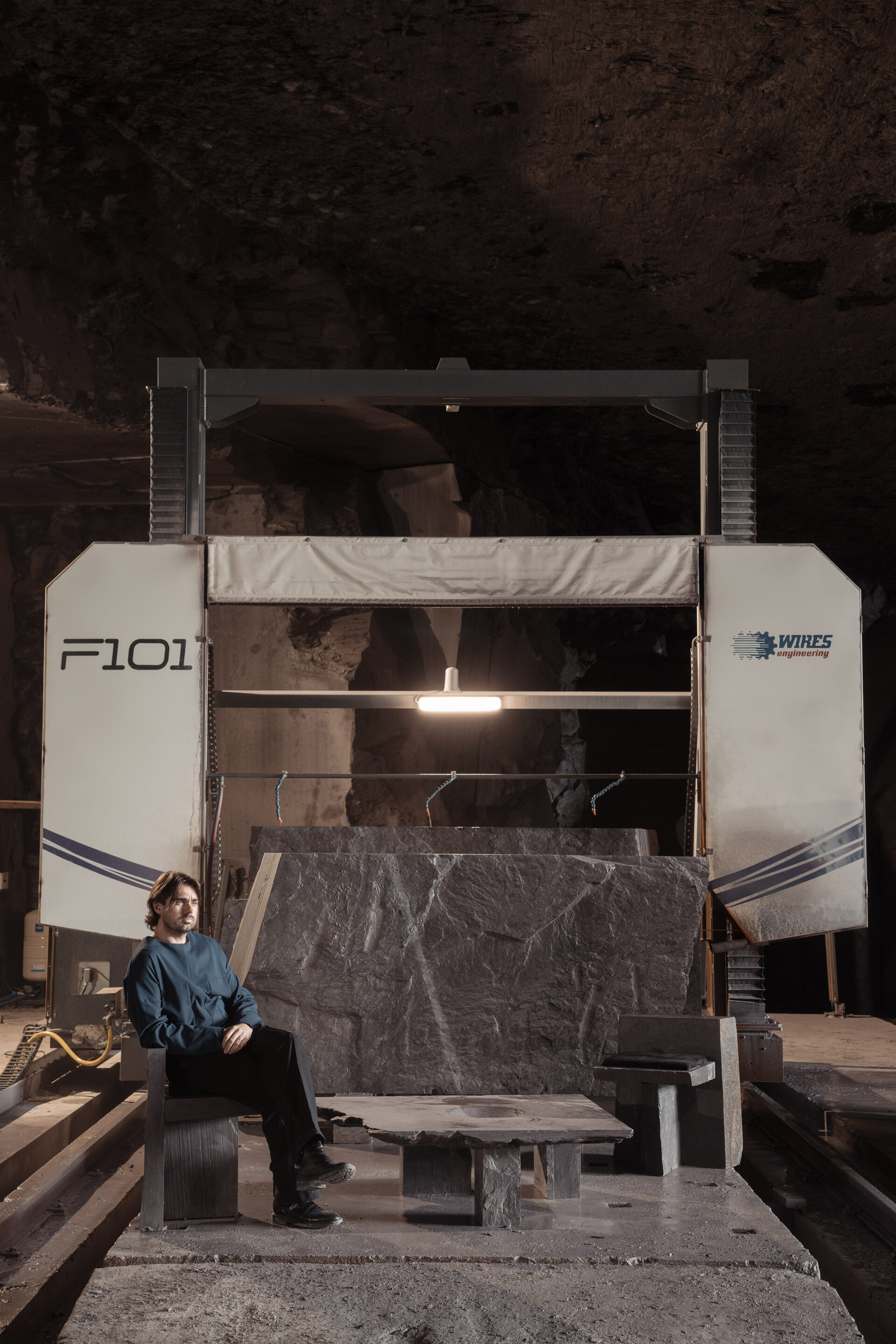
Credits
Quarrying and extraction for this collection were carried out by the team at Valentia Slate, Geokaun Mountain, Valentia Island, with special thanks to Aidan Forde, geologist and quarry owner. The quarry team included Gintautas Minkevičius, Remigijus Freitakas, Dermot Keating (Quarry Manager), Pranas Bernotas, Vidmantas Duda, and Gediminas Genčius. Concept and furniture design by Edwyn James. Final film footage by Fionn McCann, with additional documentary footage and editing by Edwyn James. All photography is also by Fionn McCann. Chair cushions handcrafted by Stef Schulmeister of The Upholstery Studio. Fashion by Lauris Brimmers. Music: CAOINE — song by Róis. Irish language specialist / translation by Tarraing Studios.
